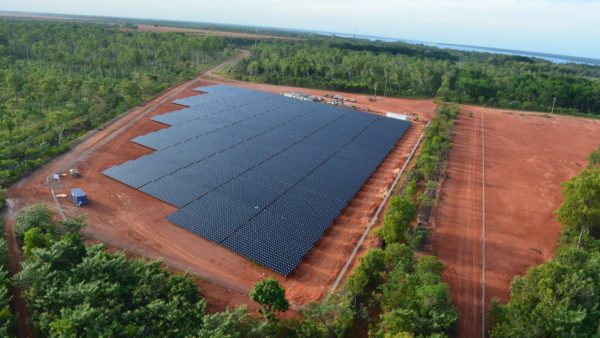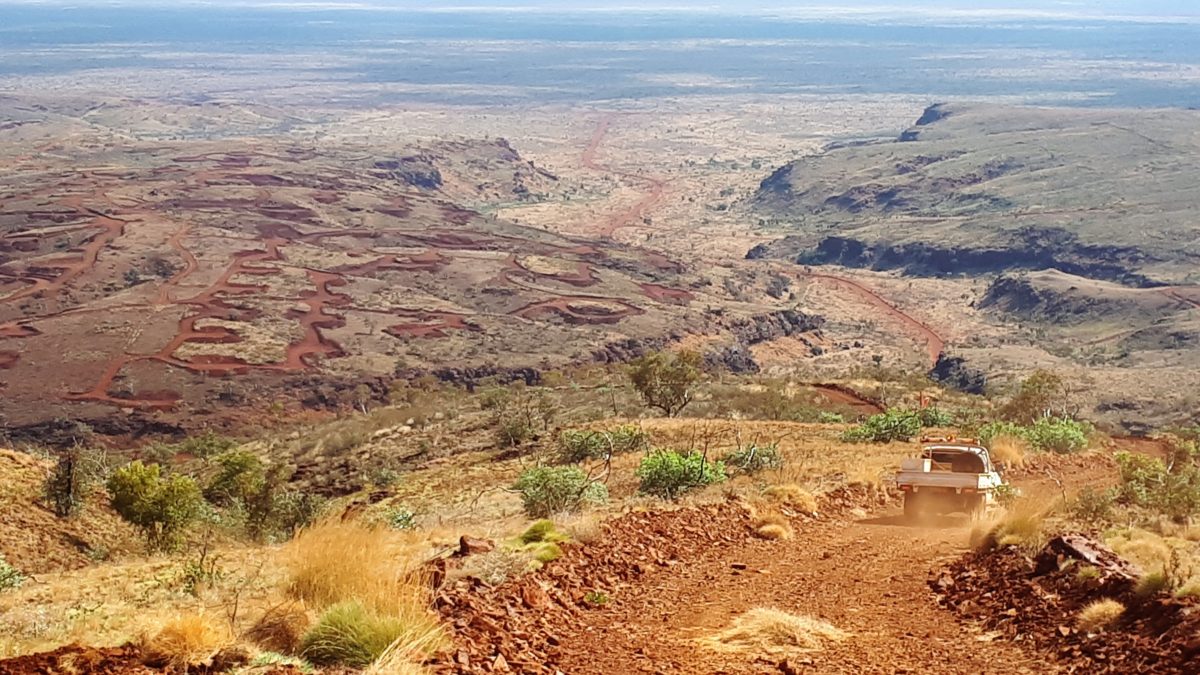Perth-based civil contractor NRW Holdings has been awarded the engineering, procurement and construction (EPC) contract to deliver a 34 MW solar + battery energy storage system at Rio Tinto’s Gudai-Darri mine in Western Australia’s (WA) Pilbara region.
The project will comprise an estimated 100,000 solar panels accompanied by a 12 MWh lithium-ion battery energy storage system that will provide spinning reserve generating capacity to support a stable and reliable network.
With construction set to begin next month and conclude in 2022, the solar plant is expected to supply all of Gudai-Darri’s electricity demand during peak solar power generation times and approximately 65% of the mine’s average electricity demand.
Described by Rio Tinto as one of the most technologically advanced mines in the world due to its focus on autonomous operations, the Gudai-Darri mine will ramp up production from early 2022 to reach an annual capacity of 43 million tonnes of iron ore.
NRW chief executive and managing director Jules Pemberton said the $60 million solar + storage contract will demonstrate the Australian company’s ability to complete renewable energy projects.
“Securing this work recognises the broader delivery capability of the business and NRW’s long-standing experience of delivering projects for Rio Tinto in the Pilbara,” he said.
“Renewable energy represents an increasing opportunity for the group, in particular captive projects like this where the energy output is integrated to the client’s network.”
The works include the design, procurement, construction, testing and commissioning of all equipment associated with the solar energy system.
This includes a 33 kV substation which will be integrated into Rio Tinto’s overall infrastructure, including remote control and monitoring via the company’s remote operation centre in Perth.
The 34 MW solar farm will eventually be connected to Rio Tinto’s grid at the Gudai-Darri central substation via a 6km-long overhead powerline and fibre-optic link, which is not included in the NRW contract.

Image: Rio Tinto
The project forms part of Rio Tinto’s commitment to reduce its carbon footprint, targeting net zero emissions by 2050. The miner has also installed a 6.7 MW solar facility at its remote bauxite operation in Weipa, Queensland.
“We continue to look for ways to reduce the carbon impact of our operations. Choosing renewable energy over traditional power generation, like we are doing at Gudai-Darri, is one of them,” the company said.
“Together with a new lithium-ion battery energy storage system, the solar plant is estimated to reduce our annual carbon dioxide emissions by about 90,000 tonnes compared to conventional gas-powered generation.”
NRW said this week that the design and procurement process for the solar farm has already commenced and construction is set to begin in August.
Construction and commissioning are scheduled for completion in early 2022.
Rio Tinto is not the only mining giant to identify the benefits of switching to renewables with a slew of operators recognising the value of solar PV.
BHP announced in January it had signed an agreement with Risen Energy for the 100 MWdc Merredin Solar Farm in WA to supply up to 50% of the miner’s electricity needs for its Nickel West Kwinana refinery over the coming 10 years.
That announcement came after it had signed a five-year energy take-off agreement to use green sources for half of its Queensland energy needs.
Fortescue Metals is also looking to renewables, announcing its Chichester iron ore mining hub in the Pilbara will be run entirely off renewable energy during the day, powered by a massive 60 MW solar farm coupled with a 35 MW/11 MWh battery facility.
This content is protected by copyright and may not be reused. If you want to cooperate with us and would like to reuse some of our content, please contact: editors@pv-magazine.com.









By submitting this form you agree to pv magazine using your data for the purposes of publishing your comment.
Your personal data will only be disclosed or otherwise transmitted to third parties for the purposes of spam filtering or if this is necessary for technical maintenance of the website. Any other transfer to third parties will not take place unless this is justified on the basis of applicable data protection regulations or if pv magazine is legally obliged to do so.
You may revoke this consent at any time with effect for the future, in which case your personal data will be deleted immediately. Otherwise, your data will be deleted if pv magazine has processed your request or the purpose of data storage is fulfilled.
Further information on data privacy can be found in our Data Protection Policy.